Frustrated With Slow Cactus Growth? You Need These 9 Varieties
Tired of waiting forever for your prickly pals to sprout? We totally get it – watching paint dry is more exciting than glacial cactus growth. But don’t give up on your spiny buddies just yet! Certain varieties are growth superstars that’ll have you doing double-takes in no time.
Unlock the secrets to explosive cactus growth by choosing one of these 9 speedsters. With the right easy tips, you’ll be shriek-snapping pics of your towering cacti to make your friends green with envy. Who’s ready to become a legendary cactus grower?
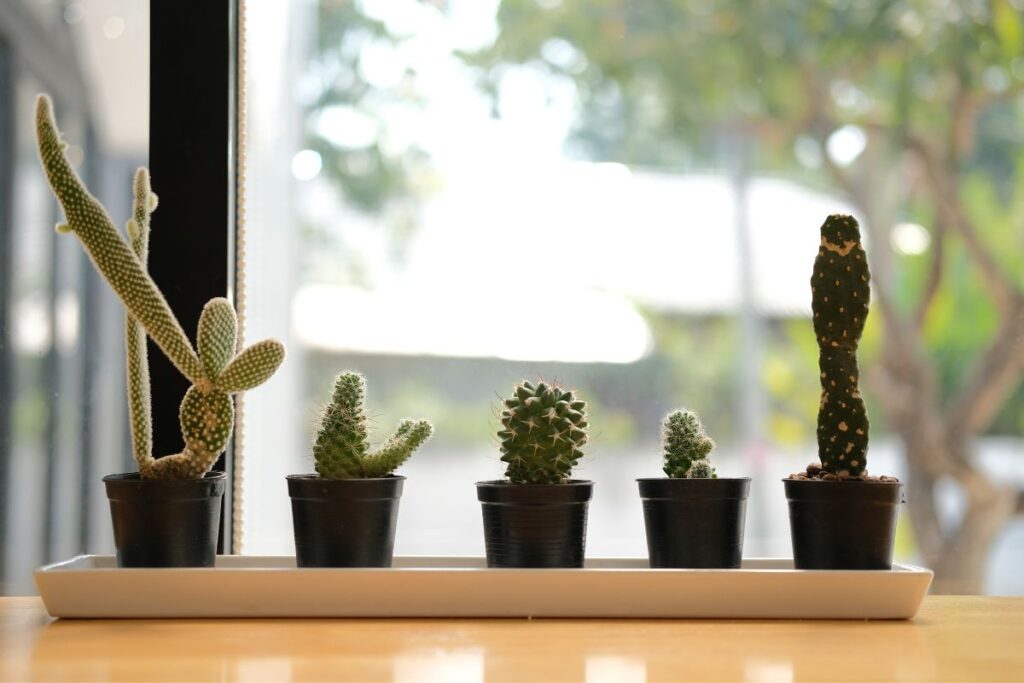
Contents
How Fast Do Cacti Actually Grow?
Most cacti grow at a lethargic pace, putting on just an inch or so per year. Yawwwn. Their unique designs help them thrive in desert climates by preventing water loss, but also mean slower growth. Leaf-free bodies can’t photosynthesize well, while tiny pores (stomata) limit carbon dioxide absorption for fuel.
It’s not all bad news though! Factors like sunlight, temp, soil, and care routines can kick growth into high gear for some species. And avoiding overwatering or nutrient overloads prevents growth stalls. With the right warm, bright conditions and occasional hydration, certain varieties transform from pint-sized to gran-prickly in almost no time!
Why Do Cacti Usually Grow So Slowly?
Bet you’ve noticed cacti lazily inching along while other plants shoot up rapidly. Their stubborn slow growth comes from clever desert-surviving designs, but also some drawbacks:
- Leaflessness means less energy from the sun for growth
- Reduced stomata (pores) limit CO2 intake, a photosynthesis key
- Their dry, low-nutrient environments restrict available fuel
Those iconic spines, hairy coats, and plump shapes? All help cacti limit evaporation and survive scorching heat by growing with a laidback tempo. But you can still turbocharge growth for some types with warm temps, ample light, well-drained soil, and moderate hydration.
How To Make Cactus Grow Faster

While patient TLC is key for most species, you can strategize to promote faster growth for certain cacti with some easy adjustments:
- Light it Up – Most cacti crave at least 6 hours of direct sun daily or super-bright conditions for explosive growth. An unshaded south-facing window is perfect indoors.
- Temp Tweaks – Warm 70°F-90°F temperatures mimic their native desert climates to fuel growth spurts. Avoid chilly nights below 50°F when possible.
- Water Wisely – These drought-busters need infrequent watering to thrive. Only hydrate when soil is bone dry, then soak thoroughly. Ditch the daily spritzes!
- Feed Moderately – A balanced cactus fertilizer provides nutrients for growth, but go easy to prevent burning. Feed every 2-3 months in spring/summer.
With the right accommodations, you’ll have these 9 varieties reaching towering new heights in a flash!
9 Cactus Varieties That Grow Fast
1. Argentine Saguaro Cactus

Look out for this monster – it can rocket up to 25 feet with an 8-foot spread in just a few years! Feed it cactus fertilizer bi-monthly and provide ample heat and sun for skyscraper growth.
2. Pereskia Cactus

This leafy guy can hit 20 feet while producing tiny flowers. Pruning promotes bushiness as the stems launch upwards rapidly. Don’t let pests like mealybugs slow it down!
3. Blue Column Cactus
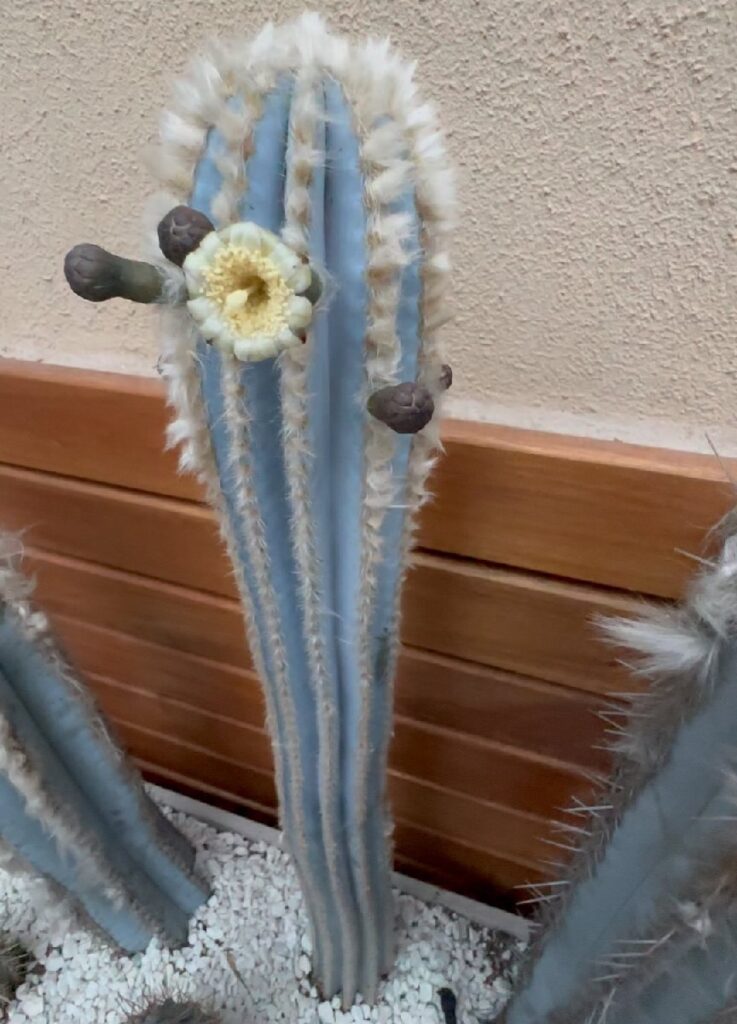
As its name suggests, this bluish towering cactus can soar 30 feet if you nail the care. Key factors are bright sun, temps above 70°F, fast-draining soil and moderate drought periods.
4. Walkingstick Cholla
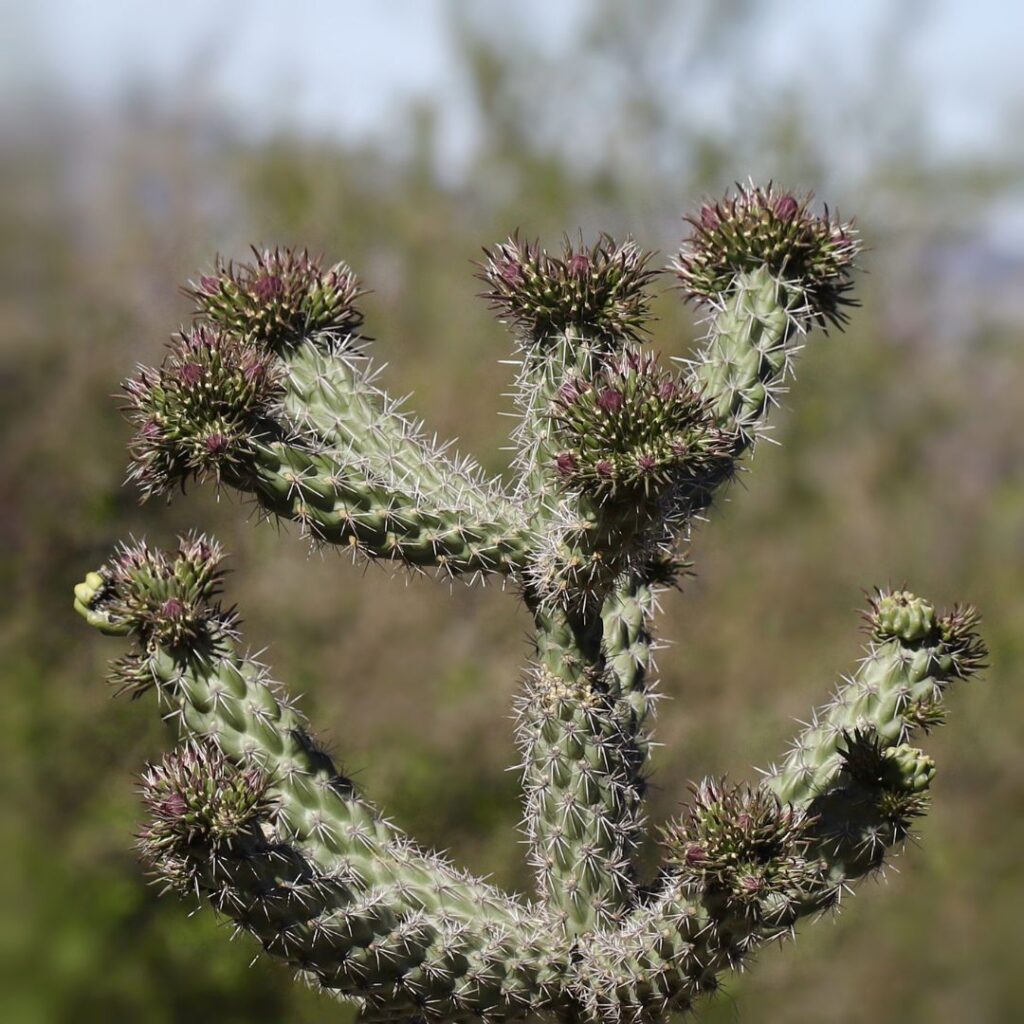
Striking maroon, yellow or white blooms arrive quickly on this fast-grower reaching 5 feet high and wide. Its skinny stems extend rapidly but need protection below -20°F.
5. Pereskiopsis Cactus
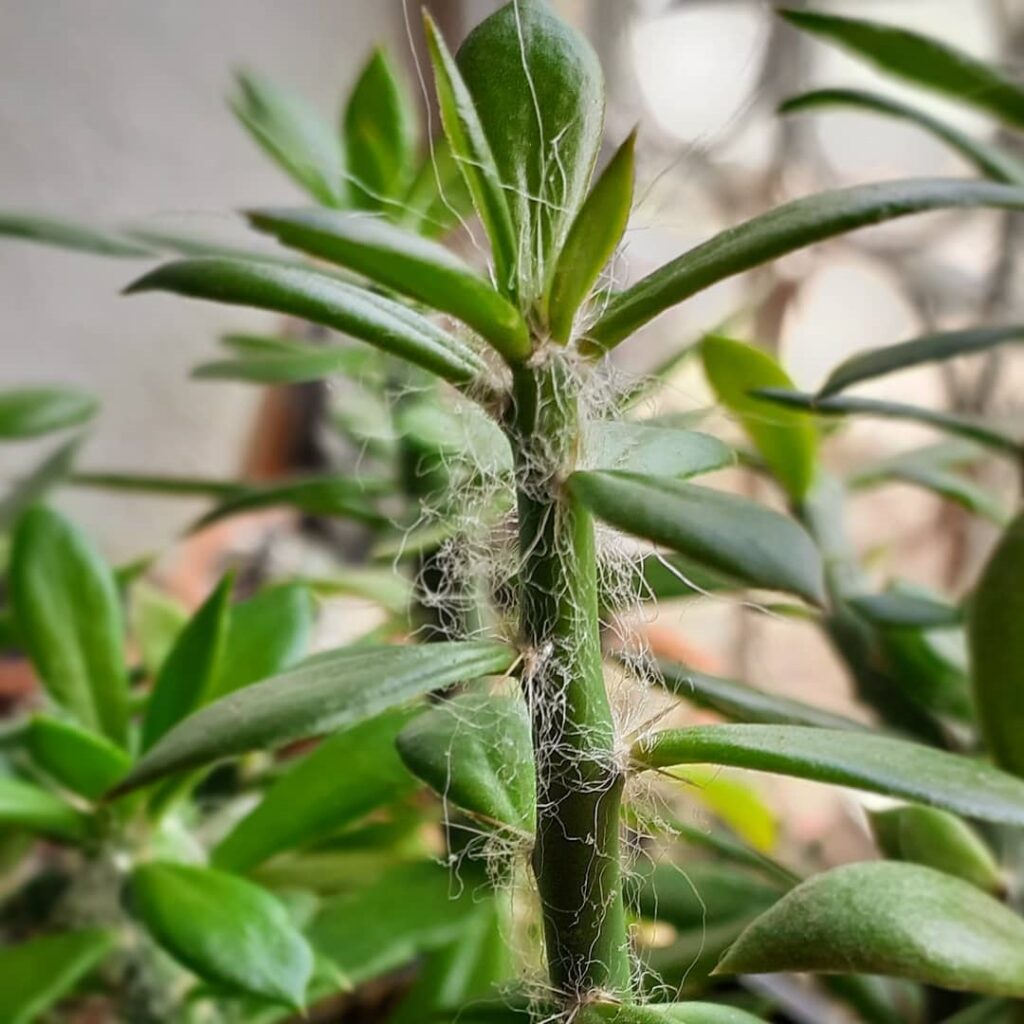
You’ll race to prune this leafy green cactus as its stems burst upward at a foot per month or even half a foot per week! It needs slightly more moisture than other varieties.
6. Peruvian Apple Cactus
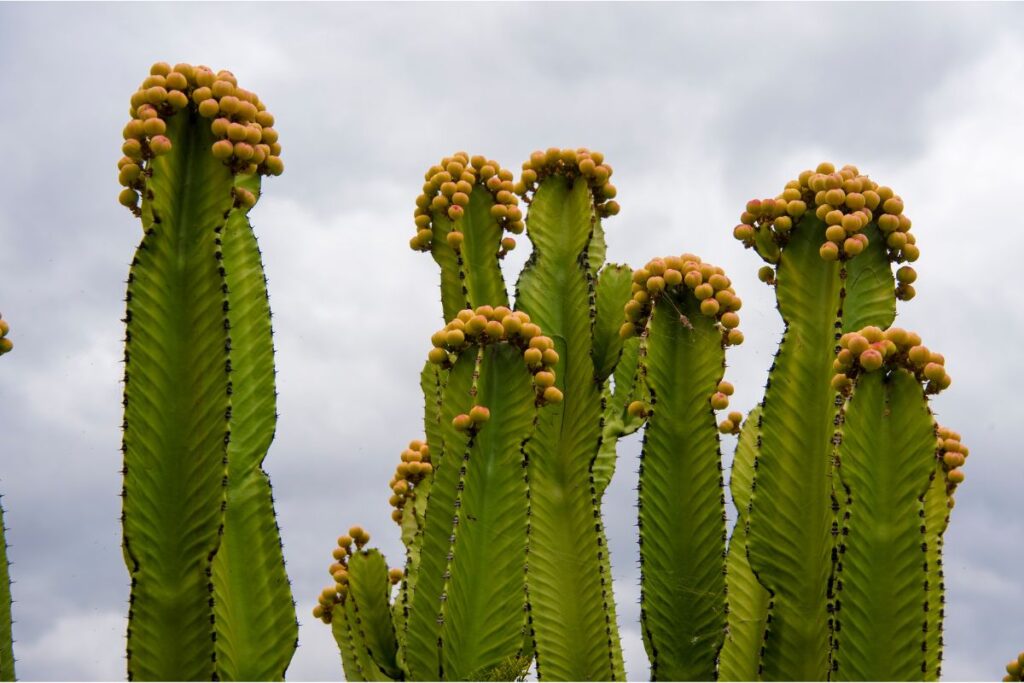
Grow this towering 30-footer for a constant supply of dragonfruit-like purple fruits. Just ensure it has enriched soil, sun galore, and expert drainage.
7. Mexican Fence Post Cactus
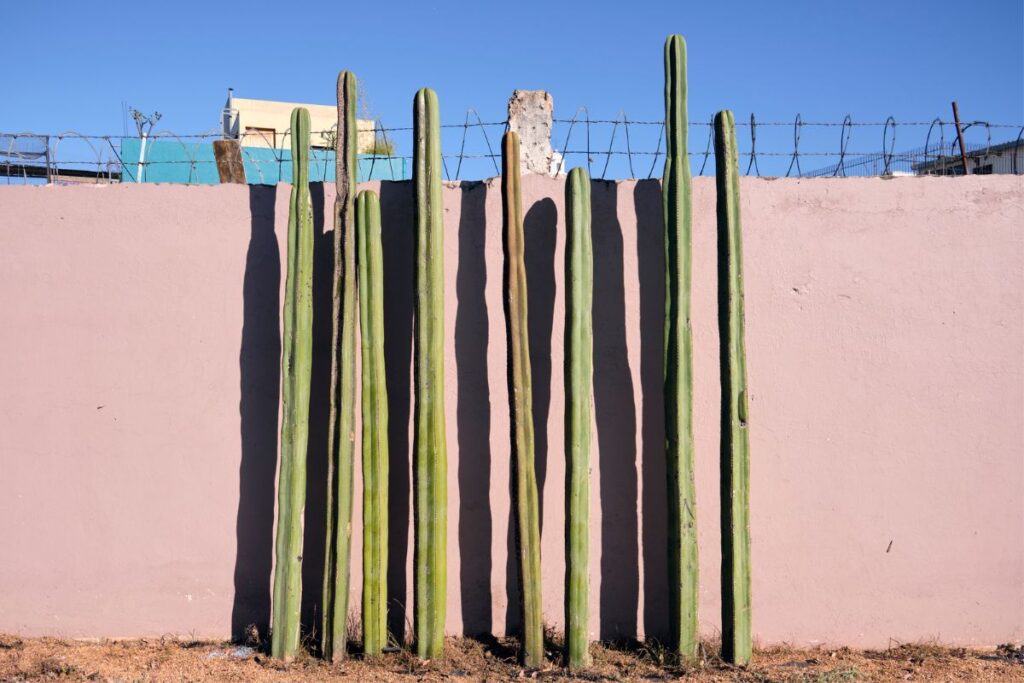
These cactus sentries can rapidly form 20-foot hedges if you take stem cuttings and avoid overwatering the sandy soil they crave.
8. Blue Myrtle Cactus
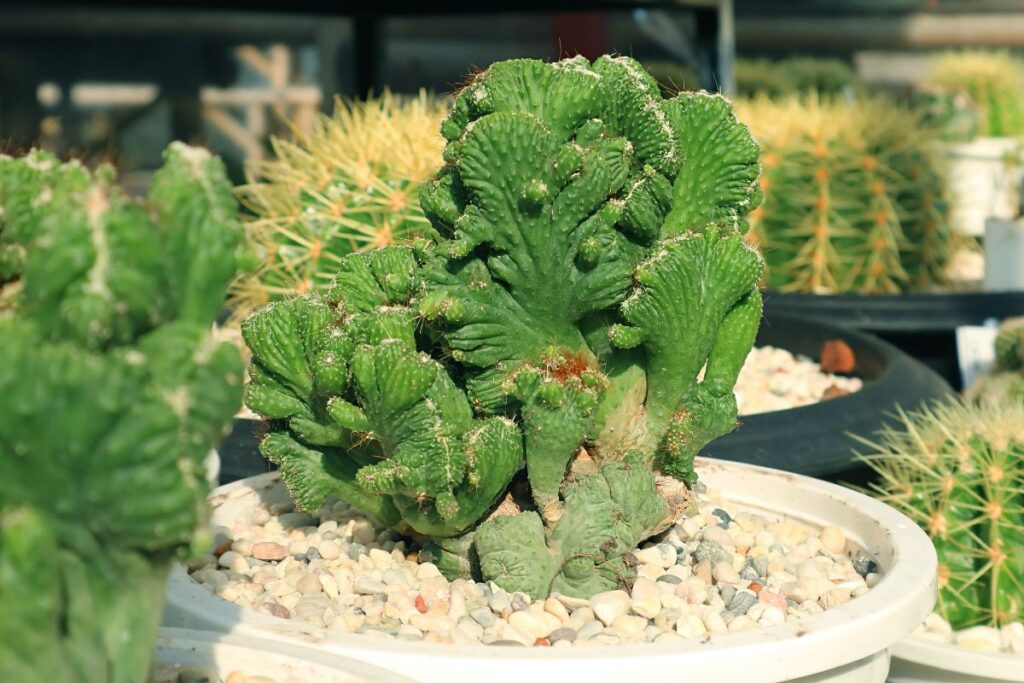
Eerily blue-hued stems allow this monster to hit 16 feet high and wide at a rapid clip. Don’t fret – it’s beginner-friendly if you follow the warmth and brightness rules!
9. Silver Torch Cactus
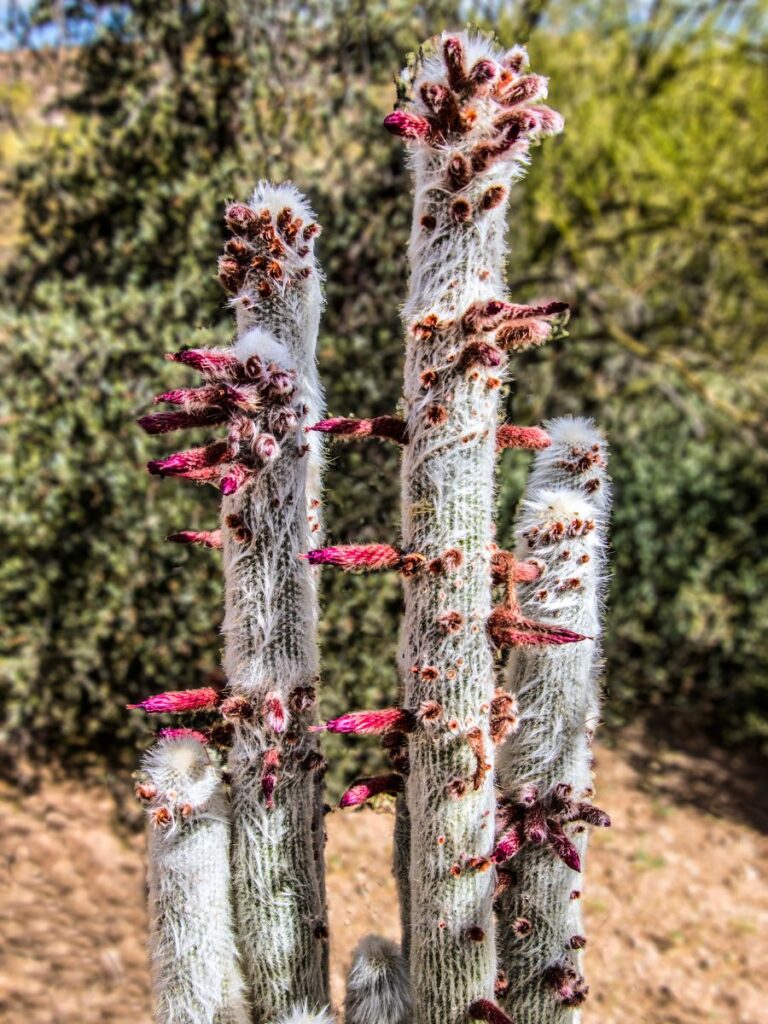
This silvery-haired beauty grows up to 10 feet while displaying magenta blooms. Provide lots of sunlight and well-draining soil for best results.
With some simple tricks and the right ultra-vigorous varietals, you’ll have cacti gaining height faster than you can say “Grow, spike-o, grow!” So inspect those spiny wonders – is one ready to become your cactus growth champion?
